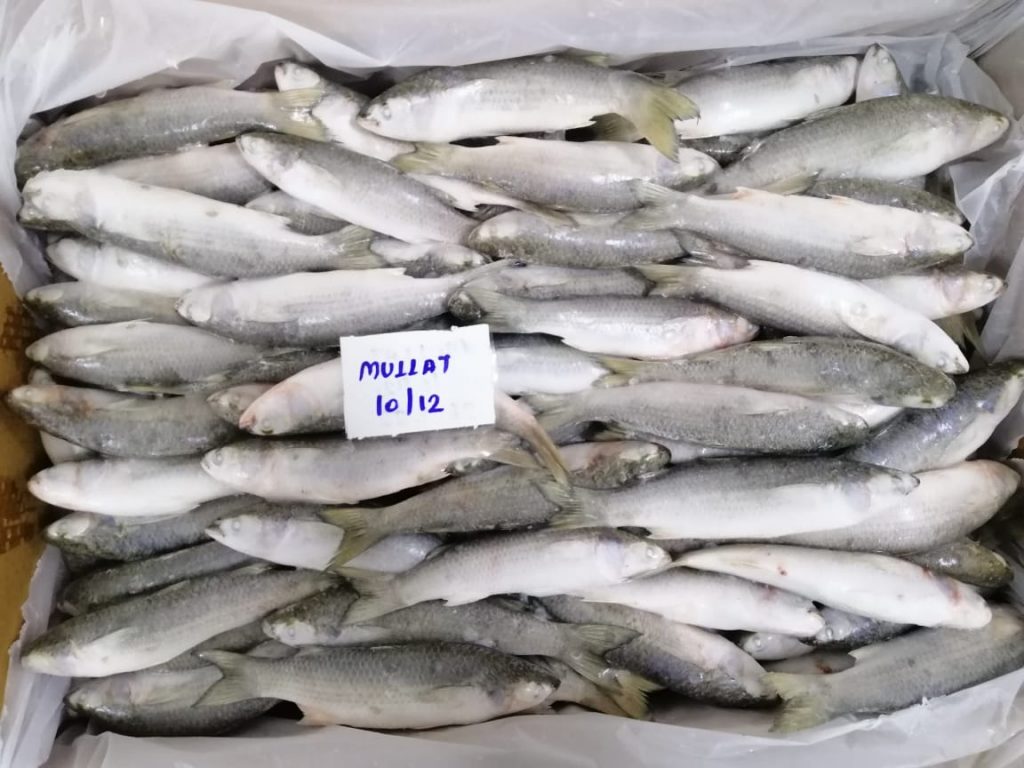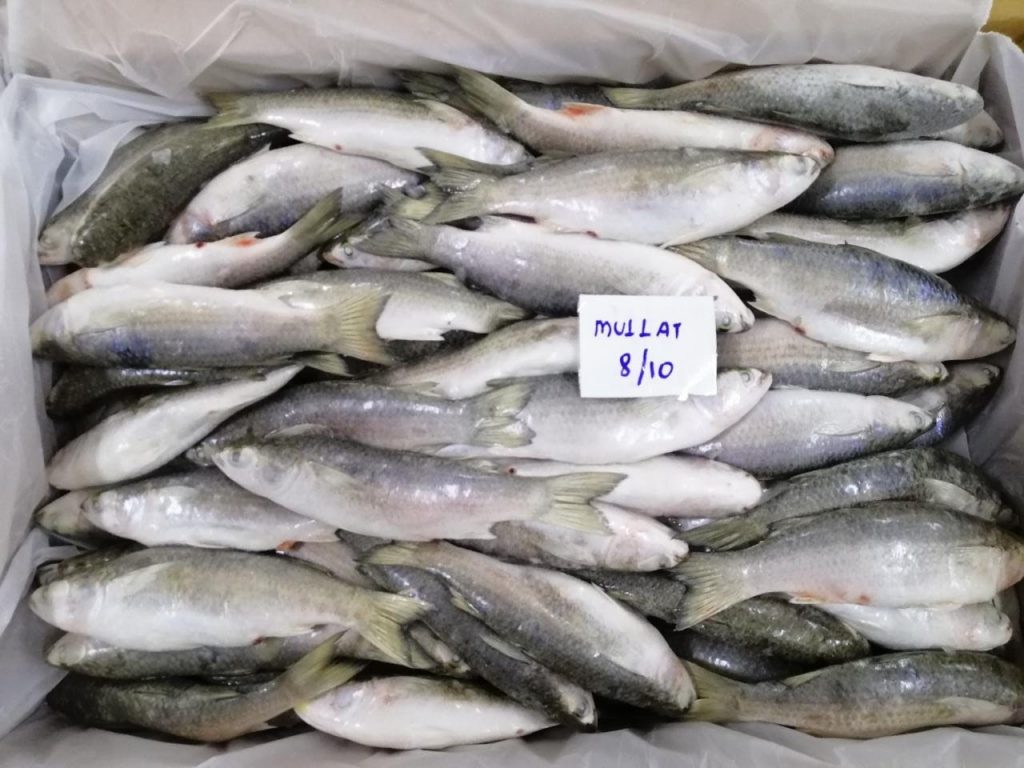
More than 100 species of mullet are found worldwide in estuaries and the open ocean. In the United States, particularly in Southeast regional cuisine, the striped mullet is the species of choice, prized as much for its roe as for its flesh. The red roe is a valuable export product for markets in Japan and Taiwan. Striped mullet are found from North Carolina to Texas. Florida accounts for most of the U.S. commercial harvest, which has been decimated by net bans. Despite its popularity in the Southeast, striped mullet remains fairly unknown in the rest of the country. Quality is dependent on freshness, so most mullet is consumed in the region where it’s landed.
Flathead grey mullet with scientific name Mugil cephalus, could be found in tropical, subtropical & temperate rivers, coastal waters and estuaries. It has flat head, two dorsal fins and torpedo shaped body. This fish has darker, greenish brown back and silver underside. Sometimes, it has dark stripes along their sides. It becomes sexually mature around 2 years old i.e. 32 to 50 cm long. It migrates offshore to spawn in large groups then larvae settles in shallow estuary habitats. As the fish grows in size or maturity, they move to deeper waters. Primarily, it feeds on plankton, detritus and use gizzard like stomach to support with digestion. It is an important aquaculture species notably in Asian and Mediterranean countries.
Nutrition
Besides delicious flavor, mullet is loaded with nutrients which are useful for the body for supporting daily nutritional needs. Moreover, mullet could promote one’s appetite.

Source of power
Carbohydrate content found in mullet is used as a power source that could achieve regular nutritional needs of the body. Carbohydrates play a vital role in metabolic processes in the body. Additionally, mullets have fat, protein and carbohydrate that serve as a source of body required for the body.
Skin and hair health
Mullets have fatty acid content which is essential to maintain healthy hair and skin. It also prevents drying and flaking.
Accelerate healing of sounds
The protein content in mullet are useful to promote the healing of wounds. Protein has a role of regerenerasi cells in the body.

How to Eat
- It is dried, salted and smoked.
- Mullet is used to make as Taiwanese Wuyutsu, Greek avgotaraho, Korean myeongran jeot, Italian bottarga, Japanese karasumi, Turkish Haviar and Egyptian batarekh.
- Mullet is consumed baked, fried or canned.
- Mullet is used in stews and chowders.
- It could be steamed, poached, sautéed, broiled and microwaved.
- It is marinated to the salad dressing.
- Add it to salad greens and pasta.
- Grill or broil it with seasoned salt and lime–butter.
Other Facts
- It could measure reach 2.5 feet in length and weighs from 2 to 3 pounds.
- The body is covered with large scales.
- Mullet has triangular shaped mouth and small head.
- Teeth are compact, miniature and arranged in several rows.
- The shape of lower jaw resembles spade.
- With two dorsal fins, first dorsal fin has five sharp spines and second dorsal fin has eight soft rays.
- It is also called happy mullet or jumping because it jumps and effectively skips across water surface.
- In wild, mullets could survive up to 16 years.
